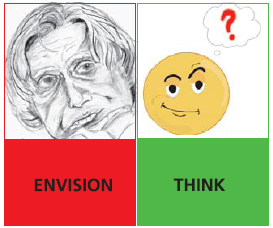| Geodesy | |
The datum debate continues
|
||||

We need Everest 2007 soon : Prof M N KulkarniIn India, for topographical mapping, we are using an old Geodetic Datum (reference ellipsoid on which the coordinates: Latitude and Longitude are projected, and mapping is carried out), called Everest 1880, defined by the work of Col. George Everest (one of the greatest Geodesists, for whom the highest peak in the world is named). It is a local datum, best-fi tting for India (as in 1880), but not fi tting the Earth as a whole in the best possible manner. Many countries in the world have been using their own local datums, and most have already redefi ned their datum, or have started using the global datum (fi tting the entire Earth): WGS84, defi ned by the Defense Mapping Agency (DMA), USA, which the GPS uses. Thus, all our Indian topogrphical maps (topo sheets) still use Everest1880 ellipsoid, and GPS gives coordinates on WGS84. If we use GPS and plot the coordinates observed on a toposheet, we will be mixing apples and oranges: the positions will differ by as much as 300 to 500 metres! Hence, the solutions are: (i) Use WGS84 as map datum, and GPS or- (ii) Use the conversion factors (called transformation parameters) to convert GPS coordinates to Everest, and use with Indian topo sheets. It is true that we are using on old datum, but it is being re-defined under a project launched by Survey of India (SoI) in the late 80s. I was in-charge of this project for 6 years (till I joined IIT Bombay). Similar project completed by USA for their datum: re-defined as North American Datum 1983 (NAD83) from NAD1927, used a very large manpower and huge funds, and took over 10 years. In SoI, we had just 4-5 persons, with a meagre budget for such project. This is an important project, and needs urgent attention of Government of India. We need Everest2007 soon!! However, according to the recent map policy of Government of India, now If yes, then why can’t we update it? Should we use WGS 84 or not? Most countries in the world are using WGS84 as the datum for their mapping. It is a datum which is here to stay, possibly for a few decades, for mapping and navigational purposes. For scientifi c applications like eathquake research, plate motions studies etc., scientifi c datums called International Terrestrial Reference Frames (ITRF) are defi ned by the International Earth Rotation Service (IERS) every year (ITRF2005, etc.). But for mapping, navigation, developmental projects, infrastructure development, and most common applications, WGS84 is good enough. The Universal Transverse Mercator Map Projection and Grid System (UTM), used most widely all over the world, is also the most scientifi c, convenient and digital mapping-compatible system, and should be used for these maps. |
||||













 (2 votes, average: 3.00 out of 5)
(2 votes, average: 3.00 out of 5)



